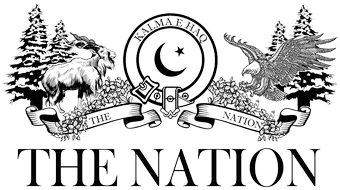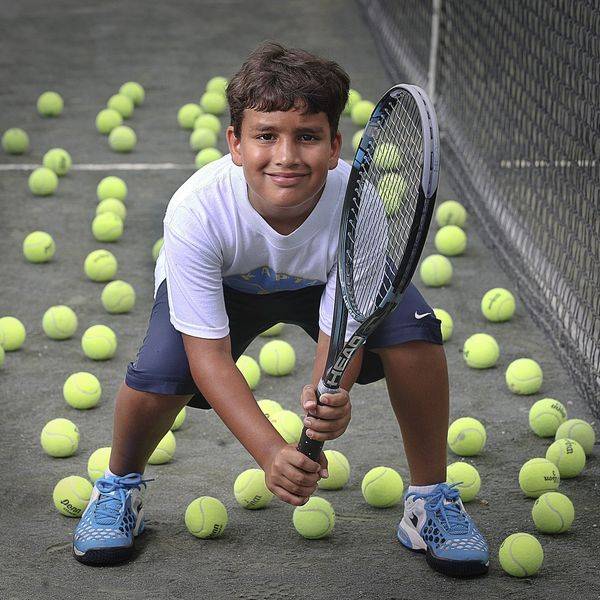Last week I wrote how without money becoming a professional tennis player is impossible. Be it your own, your parent’s money or from a sponsor, it is needed. I showed and elaborated the findings of a study done by the International Tennis Federation which strengthened my argument. This week I want to shed light on the American college sports system which is a route taken by many world champion athletes.
A few big names that went through college are, Michael Phelps (swimming), Ryan Lochte (swimming), John Isner (tennis), Jimmy Connors (tennis), John McEnroe (tennis), James Blake (tennis), Bob and Mike Bryan (tennis), Tiger Woods (golf), Bubba Watson (golf), Adam Scott (golf) and the list goes on in a score of other sports too.
The American college sports structure is very sophisticated, no other country comes anywhere close to it. There are a few associations that organize and regulate college sports. There is the National Junior College Athletics association (NJCAA) which is the governing body for, as the name says, junior colleges. Junior colleges are colleges where you can only study for two years, and then you have to transfer to a full-time four year university.
Then there is the National Association of Intercollegiate Athletics (NAIA). It governs athletics in smaller universities. Universities that are part of the NAIA normally don’t have a very strong emphasis on athletics or let’s say, the athletic department’s budget is relatively not that big.
Then there is the National Collegiate Athletics Association, popularly known as the NCAA. NCAA is the largest and the most popular of them all. All the top athletic universities are in the NCAA. The schools with the biggest budgets and the most number of sports programs try to become a member of this association. It has three divisions, division I, II and III. Division I is what you may call the top league. That is where the big sports schools are. There are some smaller schools that don’t have a very high level but it is primarily the big league.
Division I and II are allowed to give scholarships to students for being on a varsity team but division III isn’t and typically small schools are in that division. NAIA offers scholarships to student athletes as well and so does NJCAA.
U.S colleges have many different sports teams that offer scholarships to students worldwide. They don’t care who you are, where you are from, as long as you have passed high school and taken the SAT and TOEFL, and are good enough for their team, they’ll take you. The high school grades and test score requirements are different for every school and so is the level of play required by coaches.
Every sports team has its own coaching staff. For example, men’s tennis will have a head coach, an assistant coach, a graduate assistant coach, a stringer, and depending on the school, a manager a third coach and what not. Then the equestrian team will have its own coaching staff consisting of a head coach and a few assistants. The water polo coach will have the same. When it comes to money making sport like American football and basketball it gets to a point that is extraordinary.
The worst college football team in the NCAA div I will have about 80 players on full scholarships, 12 fully paid coaches on the staff, three camera operators, four equipment managers, four athletic trainers/physios, three fitness trainers and so on. Head football coaches at big schools are paid in millions of dollars per year.
Anyways, let’s get back to tennis. The point is that the college sports structure in America is no joke. A lot of pro tennis players even today are taking the college route. The three best American tennis players, John Isner, Steve Johnson and Bradley Klahn, and the top South African player today, Kevin Anderson, played NCAA division I tennis. The number one Indian singles player, Somdev Devvarman also played college tennis and there is a good reason for him and all the others to have done so.
I look at it this way, “Why not college?”
You have to see where you are at the age of 18 and decide if you want to go pro, quit tennis and go to university, or go to an American university where you can get a degree and play tennis. Or whatever other opportunities and options you have. The best part is, if you are good, it will be free of cost.
One argument is that, the level of college isn’t high enough or going professional is a completely different thing and college can’t compare with it. The top tennis programs are designed by coaches to turn their players into pros. Their aim is that by the time they finish their four years of college tennis, they are world class players who can compete at any level.
Last year when I was the assistant coach of the University of Idaho tennis team, we played the University of Southern California in the first round of nationals. The guy, student, scholar, degree seeking individual who was playing at the no. 4 four spot on their team was at that time, while in school and playing college tennis, ranked in the top 500 in the ATP rankings. There are more examples of that. College coaches send their players to play futures tournaments and encourage them to work on their world ranking.
The top 10 ranked guys in college, from my playing and coaching experience in college and playing on the pro tour, should be ranked in the top 600 ATP with the top two in the top 200 ATP. Some guys outside the top 20 college rankings will beat pros in the top 400 ATP. It’s not a fixed standard that a guy ranked so and so in college will beat so and so ATP because every player is different and at a certain level, anyone can beat anyone on a given day.
So, an 18-year-old player and his or her coach and parents need to look at a few things when they reach these crossroads to decide what route to take. They need to examine the level of the player and potential with full honesty and realistically, they need to see how much money they can spend, and they need to see If the player is hungry enough that he will go 'all in' for five to six years at least.
It is not as simple as this but to make it a little clear and to give my say, if I have any, I would go by these criteria:
If the player is 18 and is in the top 20 ITF juniors and/or top 900 ATP and the parents are financially strong, meaning they will take care of each and every need of his without any issue for the next five years, then go pro. No doubt about it.
If the same player’s parents are doubtful of that, go to college.
If the player is 18 and is the no. 1 junior in the world and/or top 200 ATP, somebody will pay for him to go pro, nothing to worry about. If not, I will lose faith in the sport. Well, not quite but it will be heartbreaking.
If a player is 18 and applies to the top 10 tennis universities in the U.S and doesn’t get accepted because of his level, he’s not good enough for pro and should go to college. A lower ranked one of course.
The most recent junior Wimbledon champion, Noah Ruben, signed with Wakeforest University and is playing for the college team since September, two months after winning Wimbledon. I’m not sure what his goals are but it shows the level of tennis in college. There are a lot of current college players who are ranked in the top 500 to 600. This is despite their busy school schedules, and tennis team duties.
The average breakthrough age of professional tennis players has increased in the recent years. Players are peaking in their mid to late twenties. When you finish college you are 22 or 23 which leaves you with a good 10 years of playing time still if we look at how Roger Federer’s career graph is taking shape or Tommy Haas and Robredo’s.
So it doesn’t mean that if you go to college, your tennis dream is over. It’s far from the truth. You get tons of match practice, high level training facilities, eight to ten practice partners that are on the same mission as you, good coaches, fitness trainers, gym, and track, everything paid for. And, if all else fails, in four years you’ll be wearing a gown and a tassel, walking up a ramp to collect your degree.
Abid Akbar is a former Under-18 national champion, a scholar-athlete at the university of Idaho, the assistant coach of his alma mater's tennis program and currently a professional tennis player






